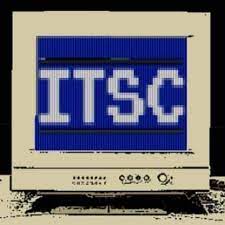Peter Corpe, Industry Leader, UK Public Sector at Appian explains how AI can be successfully woven into clinical pathways and operational processes in the NHS to support better decision-making, smart resource allocation, and improved patient care.
The NHS 10 Year Health Plan highlights three focus areas to pivot the organisation from its current ‘critical condition’ into a desired ‘engine for economic growth’, with technology featuring as a vital enabler across all three shifts.
The Government’s commitment to increasing technology use, along with spending increases announced by Rachel Reeves in the latest Spending Review, presents a crucial opportunity to fix the foundations and address the bureaucratic burden that has “stolen joy from work and time from patient care”.
Productivity and operational efficiency are among the greatest challenges facing the NHS today. Recent research highlights that process inefficiency costs NHS staff five hours per week in extra work or delays. Across the NHS’s 1.5 million workforce, this adds up to 7.5 million hours of extra work every week. Time that should be spent on strategic and value-driven activities to directly improve patient outcomes.
Despite ongoing digital transformation efforts, most departments still rely on manual processes. The impact of outdated processes is felt directly by patients and healthcare workers alike. As The King’s Fund noted, “much of the health service is plagued by basic IT woes” with staff having to navigate multiple disconnected systems before delivering care.
From fragmentation to flow: adopting an ‘agility layer’
When services remain paper-based or rely on fragmented systems, productivity suffers, and resources are stretched thin. The functioning of these fragmented systems relies on ‘human glue’ – workers manually bridging siloes of data and process. This not only wastes valuable clinical time but masks the core pain points that need addressing.
The Plan intends for “data to deliver impact”, acknowledging that “high-quality, interoperable health data, is the lifeblood for AI algorithms.”
This is where an agility layer can help – a flexible digital infrastructure that sits above existing legacy systems providing a unified value layer acting as an ecosystem upon which AI can thrive. It integrates existing systems, eliminating fragmented data and creating seamless workflows that staff can actually use efficiently, while in the back-end, IT can focus on decommissioning or replacing legacy systems strategically.
The approach reduces costs while extracting continued value from existing NHS investments and maintains continuity. This is key for delivering the Plan’s vision of liberating staff from unnecessary administrative work through digital technology and automation.
The Plan’s AI challenge
The enthusiasm towards AI as a solution isn’t misguided. But for outcomes to be successful, specific guidance on tools is required and training combined with ongoing support is essential, or healthcare workers will face significant challenges. These aren’t just planning details: they’re critical to achieving the 2% year-on-year productivity gains set out by the Government and will ensure that the NHS becomes the most AI-enabled health system in the world.
If we are serious about modernising the NHS, we need to do more than throw money at the problem – we need targeted, measured reform. While organisations are under pressure to integrate AI, its success depends on strong data infrastructures and human oversight. AI is not a magic solution on its own. Its effectiveness depends on the quality of the data it receives and how well existing processes can support its use.
AI should be a partner, not a replacement, ensuring efficiency and innovation without compromising security or accountability. Ultimately, without the right groundwork, AI risks producing more noise instead of greater value.
To succeed, AI must be embedded into well-designed processes
The key to unlocking AI’s full potential within the NHS lies in integrating it into clinical pathways and existing operational processes. Process is where work happens – where healthcare professionals make decisions, allocate resources, deliver patient care, and drive transformation. When AI operates within these processes, it gains purpose, governance, and accountability – all vital to delivering the value-based healthcare approach this Plan champions.
Process modernisation and automation that provides the environment for AI to thrive with control, is the most powerful lever available to drive service reform.
A process automation solution can fast-track time-consuming tasks such as data entry, appointment scheduling, progress tracking, compliance, and reporting. Automating these actions in harmony with AI would enable a shift towards time spent on value-driven activities that can improve both internal efficiency and service delivery.
To sustain long-term growth, healthcare organisations must invest in agile solutions like process orchestration in order to embrace AI at its core operations and not simply as a bolt-on.
NHS needs a solid foundation to set AI up for success
Embracing these tools isn’t just about modernisation, it’s essential for efficiency, stability, and better healthcare service delivery.
Ultimately, we need a strategy that embeds AI at the heart of NHS operations.
Without proper process foundations, AI risks becoming another layer of complexity rather than the productivity breakthrough the Plan promises, undermining the 2% year-on-year efficiency gains needed to secure the NHS’s future.
Get the foundation right, and AI will deliver the operational transformation the NHS desperately needs.
Related
The post How can AI deliver on NHS 10 Year Plan’s productivity promise? first appeared on TechToday.
This post originally appeared on TechToday.
